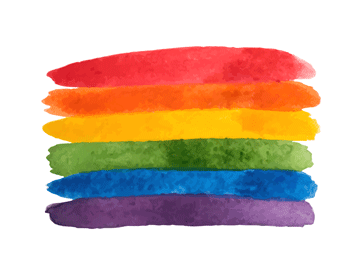It wasn’t until Ryan Kamkar, a public health major at University of California, Berkeley (UC Berkeley), first moved away to college that he felt safe to come out as gay. With his Iranian background and his upbringing in a conservative city, Kamkar felt his college community would be more supportive of him.
The only problem was, he didn’t know how to come out.
“I remember wishing for some sort of guidance, some way of knowing how to move forward in accepting myself and coming out to my parents, friends, and everyone else,” Kamkar, now a senior, says. “I knew that I probably wasn’t the only closeted student who might be wishing for this, and I could help [others] by bringing students in the LGBTQ+ community in communication with each other.”
Kamkar decided to take advantage of a UC Berkeley program that allows students to design and run their own classes to create Bear Closet, a two-credit hour class that combines sociology and discussion-based learning to deepen their understanding of what it means to come out.
Now in its fifth semester, Bear Closet is open to students of all genders and sexual identities, including those who are straight, closeted, or questioning, says Erinn Wong, a third-year student and course facilitator. She enrolled in Bear Closet as a freshman after her brother came out to her as pansexual.
“I wanted to learn more about queerness and my brother’s identity,” Wong says, “and to be more informed for myself about the queer community and its issues.”
The participants of Bear Closet formed such a welcoming, tightknit community that Wong decided to stay involved. She, Kamkar, and several other co-facilitators lead Bear Closet under the guidance of a faculty advisor for more than 20 people who enroll each semester; that number is consistently growing as word spreads about the unique class, Wong says.
Bear Closet consists of three modules focused on queerness and identity, bullying and allyship, and activism and advocacy. Each student crafts a speech about coming out — whether it’s their personal story, that of a loved one, or otherwise — that the class shares with a local LGBTQ community and mental health center.
The vulnerability and emotional impact of these stories requires that Bear Closet be a safe space for all participants, and no one is required to disclose their gender or sexual identity with the class, Kamkar says. “Our goal is to help students realize, through listening to each other’s stories, how society can have a huge influence on anyone’s self-identity and acceptance,” he says.
Bear Closet enrollees complete five service-learning hours each semester. “Students get to choose if they want to go to speaking opportunities at local schools, or they can always volunteer at events or for organizations like GLAAD,” Wong says. The course is invited to present at middle and high school classes every semester; the largest presentation they have ever given was to an assembly of 300 students, she says.
“People might think that [middle and high school] students are too young to understand these concepts, but they ask really thought-provoking questions and show us that they obviously understand and embrace what we’re doing,” Wong says, adding that Bear Closet practices difficult dialogues and how to answer uncomfortable questions from young people before visiting the schools.
Having this openness from college students who are just a few years older makes the experience of coming out seem more relatable and understandable to these adolescents, Kamkar says. “There might be a sense of awkwardness or fear among teens who would rather not talk about queerness with their classmates,” he says.
With high rates of depression and suicide among LGTBQ youth, this type of education and community-building can be a powerful public health initiative, Kamkar says. Recent polls by the Human Rights Campaign (HRC) show that while just over half of LGBTQ teens in the United States are out to their families, 65 percent are out to their classmates. The importance of peer acceptance and support is reflected in the fact that those who are out at school are also more likely to report feeling optimistic about the future.
The most frequent reason that closeted LGBTQ youth give for not coming out at school is a fear of being treated differently or bullied by teachers and classmates, according to the HRC.
“Kids learn about the stigma associated with being queer at the same time that they are still exploring their own identity. Because of this fact, LGBTQ+ teens face this threat of isolation more so than others in society,” Kamkar says. “Bear Closet exists to educate teens about how queer people can take care of their own health and safety in a society where caring for mental health is not adequately taught.”
Mariah Bohanon is the associate editor of INSIGHT Into Diversity. This article ran in the November 2019 issue.





















